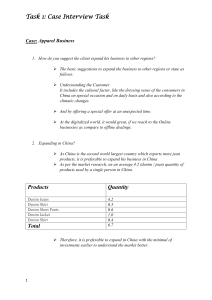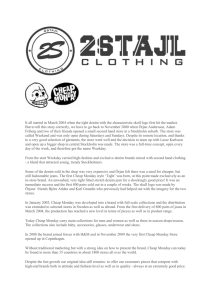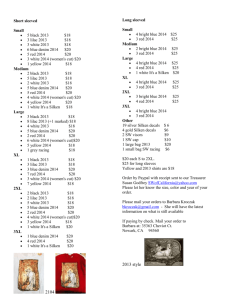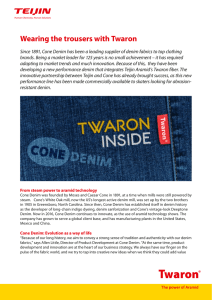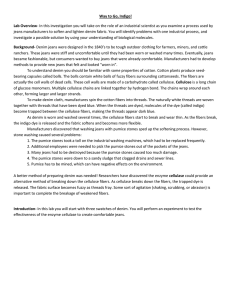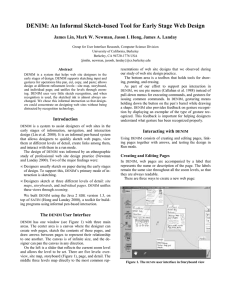Securing the SDLC: A Case Study
advertisement
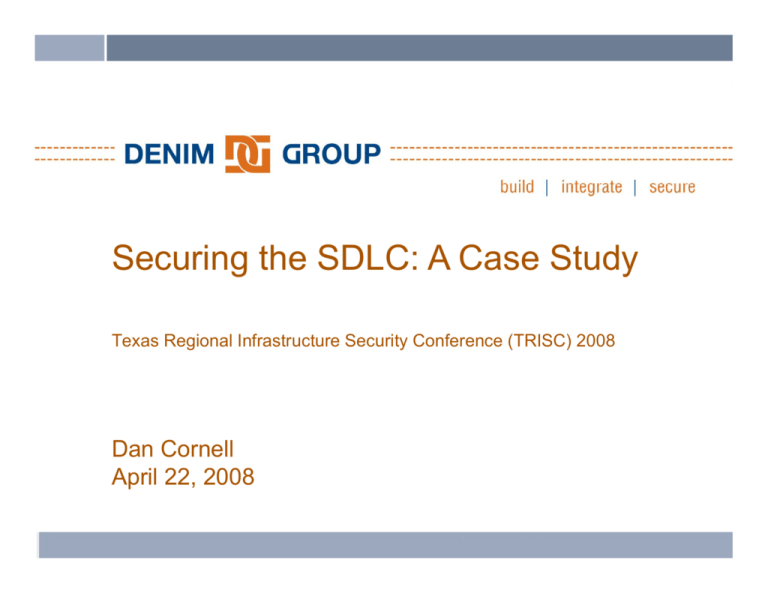
Securing the SDLC: A Case Study Texas Regional Infrastructure Security Conference (TRISC) 2008 Dan Cornell April 22, 2008 Agenda • • • • • Denim Group introduction and background The problem: Integrate security into the Denim Group SDLC How not to do it The solution: Fit to our organization Existing models for secure SDLC – Microsoft Mi ft SDL – Gary McGraw Security Touchpoints • • • • Our starting point St Steps taken t k so far f Next steps Questions 1 Denim Group Overview • • Boutique IT consultancy Two sides of business: – Software Development • .NET • JEE – Software Security • • • • • Assessments and Penetration Tests Code Reviews Training SDLC Consulting C lti Consultants rotate between project types 2 Problem: Integrate Security into SDLC • Business Reasons Why – Organizations need reliable, secure systems – Software level attacks are a primary focus area for attackers – Presumably if you are at this talk to do not need to be sold on this… • (Semi-)Cynical Reasons Why – Eat our own dog food – Practice what we preach • Ultimately: Make us better at what we do (software development and software security) 3 How Not To Do It • • • • • • • • Q: What are you all doing to address application security concerns in your organization? A: We bought “XYZ Scanner” Q: Okay… Are you actually using it? A: We ran some scans Q: And how did that go? A: Oh we found some stuff… Q: How did you address those issues? A: I think we sent the report to the developers. Not sure what they did with them. I guess I ought to check in on that… 4 Solution • Every organization is different – Development practices: Agile, waterfall, cowboy-code – Control environment: Security, IT audit, compliance – Most important: Organizational values. What is important and how do things get done? – Not necessarily “Core Core Values” Values but certainly related • Denim Group: – Intellectual curiosity • “Students” of software engineering and construction • Multi-platform, multi-disciplinary – Billability • If our people are billing then making payroll is easy – Do not compete on price, price but be market market-responsible responsible • You must overcome resistance (even at Denim Group) 5 Existing Models • • Microsoft SDL Gary McGraw Security Touchpoints 6 Microsoft SDL 7 Gary McGraw Security Touchpoints 8 Framework • • • People Processes Technologies 9 Starting Point • Culture of learning – Versatility is a great asset in our organization – lots of cross training – Lunch and learn program – Certification study groups • Requirements development – P Project j t Vi Vision i D Documentt – Functional Specification Document – Or two week iterations for Agile projects • Lots of automated testing – Unit testing – Acceptance testing • Continuous integration 10 Steps Taken So Far • • Secure application development training (people) Up front risk analysis (process) – Abuse cases, architectural risk analysis, security requirements • • Static analysis (technology) Real time analysis y distributed with binaries ((technology) gy) 11 Secure Application Development g Training • We provide this training for our clients – Great opportunity for us to develop our people and improve our training content t t att the th same time ti • Classes run in-house during lunches – – – – • Fundamental of application security OWASP Top 10 Application assessment and penetration testing Security source code reviews Run through the series of training modules then start over – Address new team members and individuals who missed modules due to being absent while on engagements • Looking g to incorporate p e-learning g as well 12 Up Front Risk Analysis • Components – Abuse cases – Architectural Risk Analysis (Threat Modeling) – Security Requirements • Done informally on a per-project basis – Only O l works k because b off security it aware culture lt • • • • Online game: detect and stop cheaters Medical records application: encryption standards Online loan application: encryption standards Social network application: pp Handling gp potentially y malicious content 13 Static Analysis • • Started with FindBugs, PMD, FxCop Recently deployed Fortify SCA 14 Dynamic, Static and Manual Testing Denim Group Decision • • • • • Most of our folks are software developers We have full access to all the code (we write it…) We are primarily responsible for the code and less responsible for the deployed environment Therefore: Static Analysis y Looking to add Dynamic Analysis in the future 16 Deploying a Tool • Questions – Who will run the tool? – When will it be run? – What will be done with the results? • If you haven’t answered these – don’t waste your money on a tool – It won’t be used – Nothing will be done with the results – However you may fool your auditors auditors… 17 Static Analysis at Denim Group: WHO • • At Denim Group, consultants rotate between development and QA roles All consultants are trained to use the tools – External security source code review – Scan the code they write – Scan S the h code d they h are providing idi QA ffor • QA team for the project are the actual gatekeepers 18 Static Analysis at Denim Group: WHEN • • Run informally via the IDE by developers to identify issues before someone else finds them Integrated into nightly build 19 Static Analysis at Denim Group: WHAT • Don’t argue about exploitability – just fix the @$%! Issue – Scheduled bug fixing “sprints” (1-4 hours) – great for squashing bugs, tough f end for d tto end d metric t i tracking t ki • • • HOT defects must be fixed or signed off on by a Principal OR by th Di the Director t off T Technology h l WARNING defects must be fixed or signed off on my the Project Lead AND the QA Lead We have an advantage over many organizations because our application portfolio rolls over periodically 20 Real Time Analysis with Binaries • • RTA technology distributed with all JEE and .NET binaries Protects against some variants of many common attacks – SQL injection – Cross Site Scripting (XSS) • • More important – provides information about attacks in progress Trial license 21 Next Steps • • • • Additional documentation Application portfolio management Dynamic analysis tools Formal application assessments 22 Additional Documentation • • Consistently augment our PVDs and FSDs with specific security requirements Must be done in project budget-responsible manner 23 Application Portfolio Management • Start to track some metrics and trending 24 Dynamic Analysis Tools • • We use them for our assessments and penetration tests Would provide additional coverage for our security testing 25 Formal Assessments • Have QA perform actual application assessments according to our externally-facing methodology – Done informally right now • • Scheduled WBS item Must address Critical and High issues before release 26 Conclusions • Good progress made – – – – • Security aware culture Security trained developers Security requirements addressed up front Static analysis helps baseline code security Still more to do – Formalize documentation – Consistency 27 Questions? Dan Cornell dan@denimgroup.com Web: www.denimgroup.com Blog: denimgroup.typepad.com denimgroup typepad com 28
